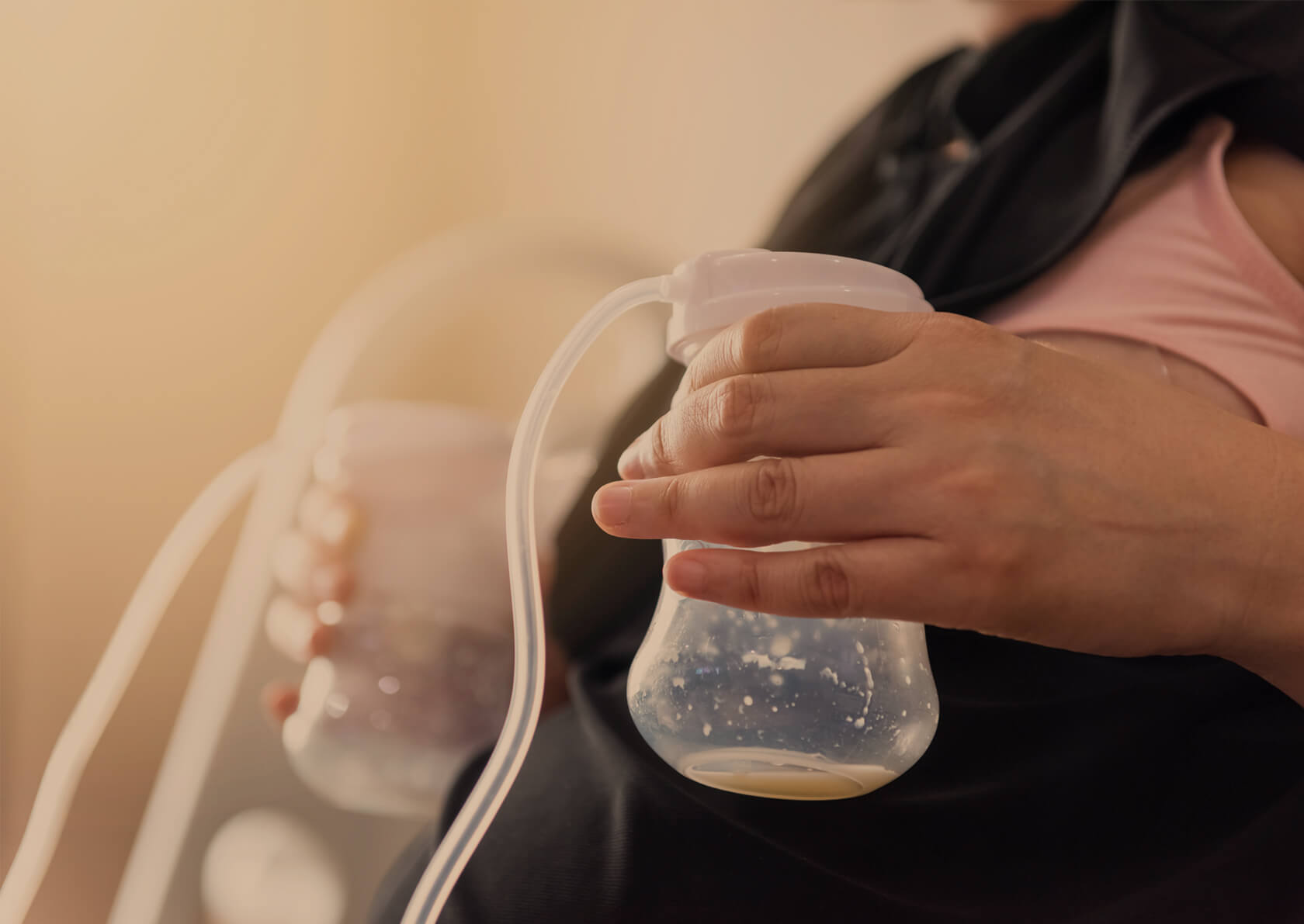
Your breastfeeding journey begins after your baby is born, right? Actually, there are ways you can prepare for breastfeeding in the month before birth. Mamas looking to set themselves up for breastfeeding success are increasingly engaging in antenatal hand expressing. But what is antenatal hand expressing, and how does it help?
We spoke to NICU nurse, paediatric sleep consultant, and lactation consultant Courtney Garland to find out more. Courtney is a mama of three and the founder of online community Mamalinc. She tells us why you might try antenatal hand expressing and how to go about it.

What is antenatal hand expressing, and why would you do it?
Antenatal hand expressing is when you express breast milk by hand while you’re still pregnant. You can start at around 36 or 37 weeks after getting the green light from your medical provider. Courtney explains that antenatal hand expression has two main benefits – confidence and stimulation.
“I think confidence and comfortability with our breasts is a huge part of breastfeeding,” Courtney says. Our breasts change so much during pregnancy, and antenatal hand expressing can help set mamas up to feel confident and comfortable with their breasts even before their baby is born. Expressing milk antenatally can reassure mamas that their breasts are producing milk. Learn how to hand express while you’re still pregnant, and you’ll have an extra tool at your disposal to manage some of the breastfeeding issues that commonly crop up in the first weeks of a baby’s life, like latching difficulties caused by breast engorgement. Hand expression can make full breasts feel more comfortable and helps to soften the nipple to help baby to latch.
Antenatal hand expression also stimulates the breasts, which can help start your breastfeeding journey on the right path. Courtney explains that research conducted with diabetic mothers shows that the stimulation of antenatal hand expressing can help to bring in a mama’s milk more quickly (which can be especially useful for mamas who have an epidural during labour or a caesarean section) and also the expressed milk is useful for once baby is born. But Courtney says, “unless your midwife or your medical provider is not okay with you antenatally expressing, I think every mother should be doing it because it just gives you that comfortability and that confidence.”

How do you hand express breast milk while you’re still pregnant?
Here are Courtney’s top tips for antenatal hand expressing.
- Make sure you’re relaxed. A nice warm shower is the perfect place to start. Bring a Lactamo ball warmed up in a cup of hot water into the shower with you. Start by massaging your chest and around the breast with the Lactamo. Then, support your breast with one hand while you massage it for about one minute. Make a C shape with your fingers and your thumb and put them close to the base of the areola, and press in, down and back. Apply pressure, but don’t squeeze too hard – it shouldn’t hurt. Keep going until you find the sweet spot that produces a drop or two of colostrum. You have milk ducts all over your breast, so keep moving your hand until you find another spot that produces another drop of milk. The drops will be tiny - the size of a pinhead. And remember, if nothing comes, that’s normal too! Once you’ve done one breast, try the other. “Learning how to hand express is not easy. It takes time and practice. So I always say, practice in a hot shower every day.”
- Don’t block the milk flow. Make sure you’re not accidentally blocking the flow of milk by coming across the nipple with your hand. Instead, stop your hand at the base of the nipple and squeeze there, and you’ll be more likely to see milk come.
- If you get a tiny drop of milk, celebrate! Getting the smallest drop of milk when you’re antenatally hand expressing is huge. It shows that your breasts are making colostrum. Be proud of yourself and your body!
How much milk should I be getting?
Courtney says at 36 and 37 weeks, you should only expect to get 0.25mL of milk – literally no more than a drop. “In the beginning, when you're hand expressing, it's more about learning the breast and feeling it and really getting used to how to hand express to get things going,” she explains. “We're just getting some stimulation going, and we're also just giving mothers the confidence with their breasts.”
We’ve all seen the photos on social media of newborns being fed colostrum from a syringe or mamas hand expressing great volumes of breast milk. But Courtney says we shouldn’t expect to produce even two millilitres of milk at 36 or 37 weeks. It’s all about those tiny drops. “You're not going to be getting heaps of milk, and that's okay. I want mums to know that you shouldn’t expect to get heaps,” she says.
What if nothing comes?
Don’t worry! Courtney says if you’re not getting any milk, that is perfectly normal. “If you're not getting anything, that's not a sign that the milk's not coming in. It just might be that when baby's born, and those hormones completely switch over, your milk comes in then.”
She wants mamas who give antenatal hand expressing a go to remind themselves, “’This is just about helping me out, feeling comfortable with my journey and trying to set myself up right.’ Because that's what antenatal expression does. It really sets you up to try to get this journey going the way you'd like it to.”
How can I collect colostrum to use when my baby is born?
If you’re feeling up to it and you have your doctor’s approval, Courtney says at 38 or 39 weeks, you can try pumping with a breast pump. This is when you might produce up to one millilitre of colostrum that you can collect and store in the freezer to use as ‘backup ammo’ when your baby is born. But, she says, “don’t pump for hours. I just want you to do five, seven minutes. That's it. Just a few minutes while you're watching TV in the evening every few nights.” Massage around the chest and breast with a warm Lactamo to help get the milk flowing. Like hand expressing, you may get some milk, and you may not, and that’s okay. It can take a good few tries before you produce any milk. Making sure you’re relaxed (or distracted by a great TV show) while you’re pumping can make a big difference.
If in doubt, please always consult your healthcare professional.






